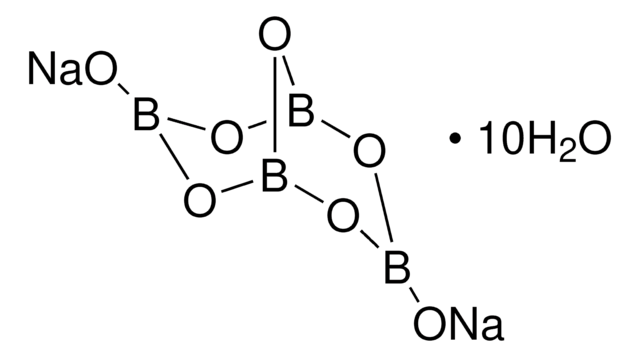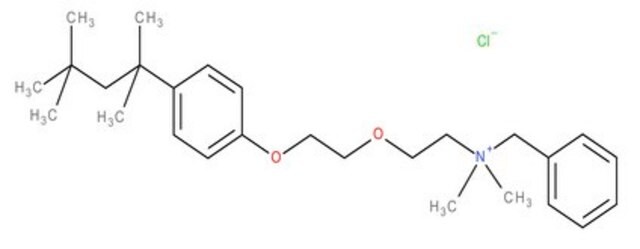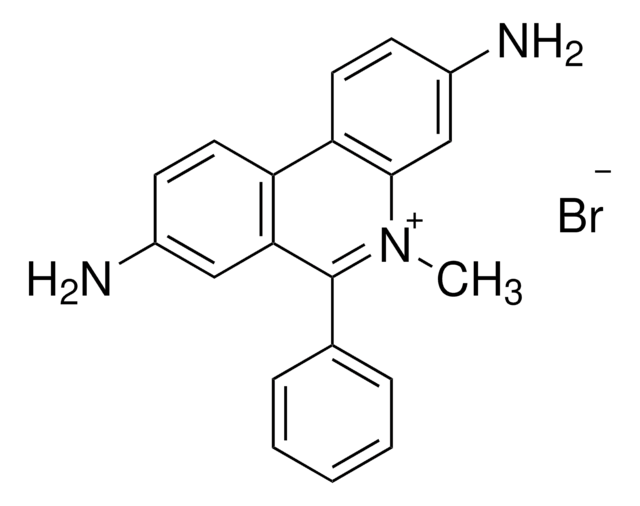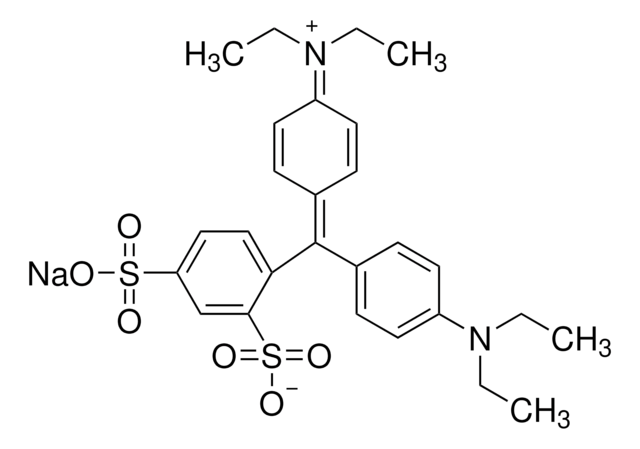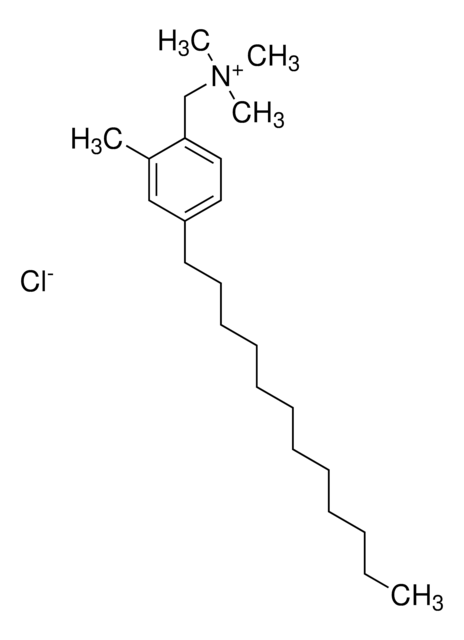Kluczowe dokumenty
B8879
Benzethonium chloride
≥97% (titration), ≥98% (HPLC)
Synonim(y):
(Diisobutylphenoxyethoxyethyl)dimethylbenzylammonium chloride, Phemerol chloride
About This Item
Polecane produkty
opis
cationic
Poziom jakości
Próba
≥97% (titration)
≥98% (HPLC)
Formularz
powder
masa cząsteczkowa
448.08 g/mol
mp
162-164 °C (lit.)
rozpuszczalność
H2O: 100 mg/mL, clear, colorless
Zastosowanie
microbiology
ciąg SMILES
[Cl-].CC(C)(C)CC(C)(C)c1ccc(OCCOCC[N+](C)(C)Cc2ccccc2)cc1
InChI
1S/C27H42NO2.ClH/c1-26(2,3)22-27(4,5)24-13-15-25(16-14-24)30-20-19-29-18-17-28(6,7)21-23-11-9-8-10-12-23;/h8-16H,17-22H2,1-7H3;1H/q+1;/p-1
Klucz InChI
UREZNYTWGJKWBI-UHFFFAOYSA-M
Szukasz podobnych produktów? Odwiedź Przewodnik dotyczący porównywania produktów
Opis ogólny
Zastosowanie
Oświadczenie o zrzeczeniu się odpowiedzialności
Hasło ostrzegawcze
Danger
Zwroty wskazujące rodzaj zagrożenia
Zwroty wskazujące środki ostrożności
Klasyfikacja zagrożeń
Acute Tox. 3 Oral - Aquatic Acute 1 - Aquatic Chronic 1 - Eye Dam. 1 - Skin Corr. 1B
Kod klasy składowania
6.1A - Combustible acute toxic Cat. 1 and 2 / very toxic hazardous materials
Klasa zagrożenia wodnego (WGK)
WGK 2
Środki ochrony indywidualnej
Eyeshields, Faceshields, Gloves, type P3 (EN 143) respirator cartridges
Wybierz jedną z najnowszych wersji:
Masz już ten produkt?
Dokumenty związane z niedawno zakupionymi produktami zostały zamieszczone w Bibliotece dokumentów.
Klienci oglądali również te produkty
Nasz zespół naukowców ma doświadczenie we wszystkich obszarach badań, w tym w naukach przyrodniczych, materiałoznawstwie, syntezie chemicznej, chromatografii, analityce i wielu innych dziedzinach.
Skontaktuj się z zespołem ds. pomocy technicznej


